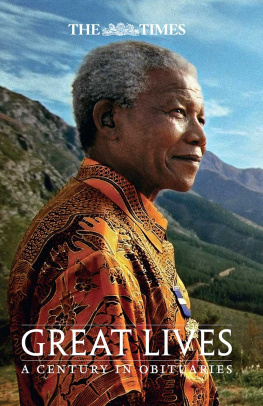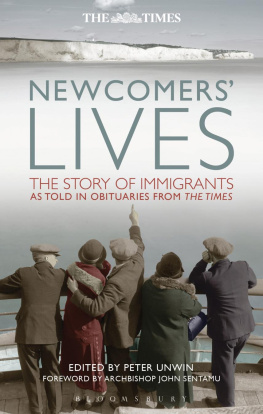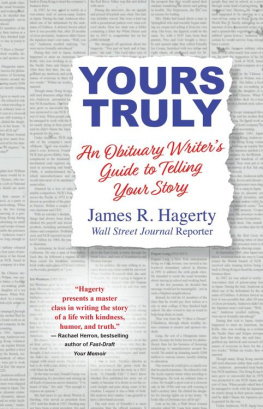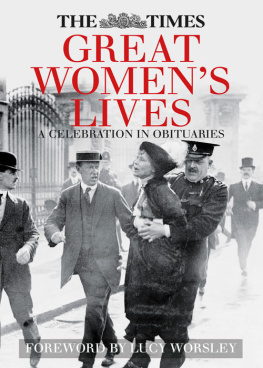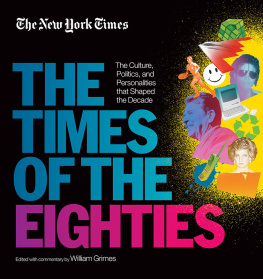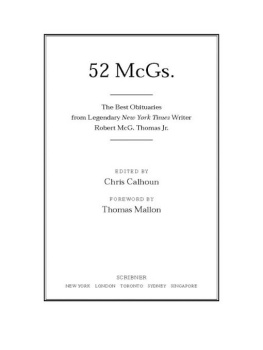The headline appeared on the front page of The New York Times on April 17, 1865:
OUR GREAT LOSS
The Assassination of President Lincoln
DETAILS OF THE FEARFUL CRIME
Measured against the national calamity it described, the headline was relatively small, occupying the pages upper left corner over one long, narrow column of type. The tone was more mournful than excited, more a comforting hand on the shoulder than an urgent clutching of the lapels. The reporting that followed was sober, unhurriedso much so that The Times thought it prudent to tell its readers quickly, in the third paragraph, that in Washington all business in the departments was suspended during the day.
Still, as we read it now, our imaginations are stirred by the account. We can never know what it was like for Americans of that distant year to learn the shocking news that Lincoln had been assassinated. But by reading the very words that they did, we can, for a moment, suspend our superior 21st-century knowledge of the event and put ourselves in the mid-19th-century shoes of a populace hungry for whatever information could be had about the horrible crime, as The Times called it.
Its a time-transcending experience that may be found throughout this book, for each obituary here is largely what appeared in print after the momentous death occurred. (I say largely because most of these have been abridged somewhat so that all might fit snugly between the covers.)
An even fuller experience awaits readers who may wish to plumb the searchable online archive of obituaries to which the purchase of this book provides accessa deep well of more than 10,000, unabridged, that have appeared in The Times since its first issue, on Sept. 18, 1851.
Think about that date for a moment. As the obituaries editor of The Times, I admit that I may harbor a certain bias born of institutional pride, but I can think of precious few news organizations still in operation today that can boast of a legacy reaching back that farthat could mine their archives to present so vast a historical lineup, from Daniel Webster to David Bowie. And few news organizations, I would venture, have been as conscious of contributing to the historical record as The Times. Thumbing through these pages will attest to that; the book is a veritable portrait gallery of some of the most luminous personalities to have left their mark on the world since before the American Civil War.
As that 10,000-strong online archive suggests, however, The Book of the Dead does not purport to be comprehensive; the historical figures who have shaped the world since the early decades of the 19th century number vastly more than the 350 or so presented here. A fuller roster might fill a 10-volume set. But the ones who are includedheroes and villains alikeare indisputably deserving, for good or ill.
Theyre not unlike the people who appear in Times obituaries on any given day. In both cases, book and newsprint, theyre the chosen few. Their accomplishments, their prominence, their impact on society elevate them to a rarefied plane. As we say on the obit desk, They rise.
That is not to suggest that in life they were necessarily better than you or me, just more consequential, broadly speaking; not necessarily more worthy of our esteem as human beings, just more newsworthy.
The parade of giants portrayed in this book has something else in common with the daily run of notables featured on the obituary page: They rose above their competition, their fellow deceased. They were judged as simply having a greater claim on our attention than others, even if by a hair. The choosing is a necessary practicality: Even the most conscientious news organization has only so many hands and so much time in the day to produce these short-form biographies. And a book like this has only so many pages in which to accommodate them. Reasonable arguments are routinely made for many accomplished candidates who nevertheless fail to make the cut in the newspaper, just as sound cases could be made for the hundreds of history shapers who are not accounted for in these pages. But the inn has only so many rooms. Many worthy subjects had to be turned away, often reluctantly. (And, for production reasons, none who died after June 3, 2016, could be included.)
Like the daily obituary page, this book is a mirror on the pasta wide rearview mirror. A lone obituary tells a life story, but when gathered with others on a broadsheet page or in a bound volume, they may collectively reflect the society that shepherded those lives to the forefront in the first place.
One will notice that most of the people who appear in these pages are white and male. One may notice a similar imbalance in the newspaper, though lately, Im happy to say its diminishing as the more overtly discriminatory past recedes ever further from view. But the bias is undeniable, and it, too, is historical: It reflects the prejudices and injustices of an earlier era. To single out the movers and shakers of historyWestern history in any caseone must inevitably draw from those who controlled the levers of power, and that group, as we know, was composed mostly of white men.
But history is also a tale of barriers breached. Many stories in this book tell of men and women who overcame racism, sexism, anti-Semitism and other forms of bigotry to help shape their world and, by their achievements, repudiate those very isms. Harriet Tubman, Martin Luther King and Cesar Chavez are just a few. (In some cases white men themselves could be counted among the disadvantaged, strivers who climbed the social ladder and succeeded with little but their own native intelligence and grit. See Lincoln.)
Obituaries by definition evoke the past, and when written decades or centuries ago, they echo those lost worlds in their diction, their vocabulary, their styles of punctuation and capitalization, and their tone, be it eloquent, turgid, blunt or florid. The rays of the morning sun fell across the cottage porch upon a family waiting only for death, The Times reported in its melodramatic account of the death of Ulysses S. Grant in 1885. One pleasure of this book is that as a time portal it lets you hear the past as well.
It also lets you chart the evolution, by stops and starts, of the obituary as a journalistic form. In the early days of The Times, the obit was often little more than a bulletin-board notice, a few paragraphs to inform readers of the fact of death, not to rehearse the entire life. The London Times announces the death of the distinguished author of Democracy in America; an event for which previous reports of his rapidly declining health had prepared us, The Times wrote in 1859 about the death of Alexis de Tocqueville.
Later obits offered abbreviated biographies, often carrying a eulogistic tone. Others suggested that political sympathies may have been at play. President Grants last breath elicited a long, fevered report from his deathbed as well as a crushing biography of more than 40,000 leaden words; his great rival, Gen. Robert E. Lee, received a fraction of that total and, it seems, the back of the hand when The Times, stalwart of the Union, lamented that so gifted a military man had cast his lot with traitors in their wicked plot to tear asunder the Republic.
The obituary took a more standardized form in the early decades of the 20th century. Typically a brief wire service report announcing the news would be plunked on top of an obituary written in advance by an anonymous Times staff member. But the treatment from one day or one year to the next was not always even-handed. J.P. Morgan received a gargantuan obituary; the legendary pitcher Cy Young something well short of a column. Only later did bylines appear, notably that of Alden Whitman, who gained a measure of fame as a writer of elegant advance obituaries, often traveling to interview his subjects for posthumous publication. And only later were the word lengths of obituaries reliable measures of the subjects significance, at least in the judgment of the editors.



